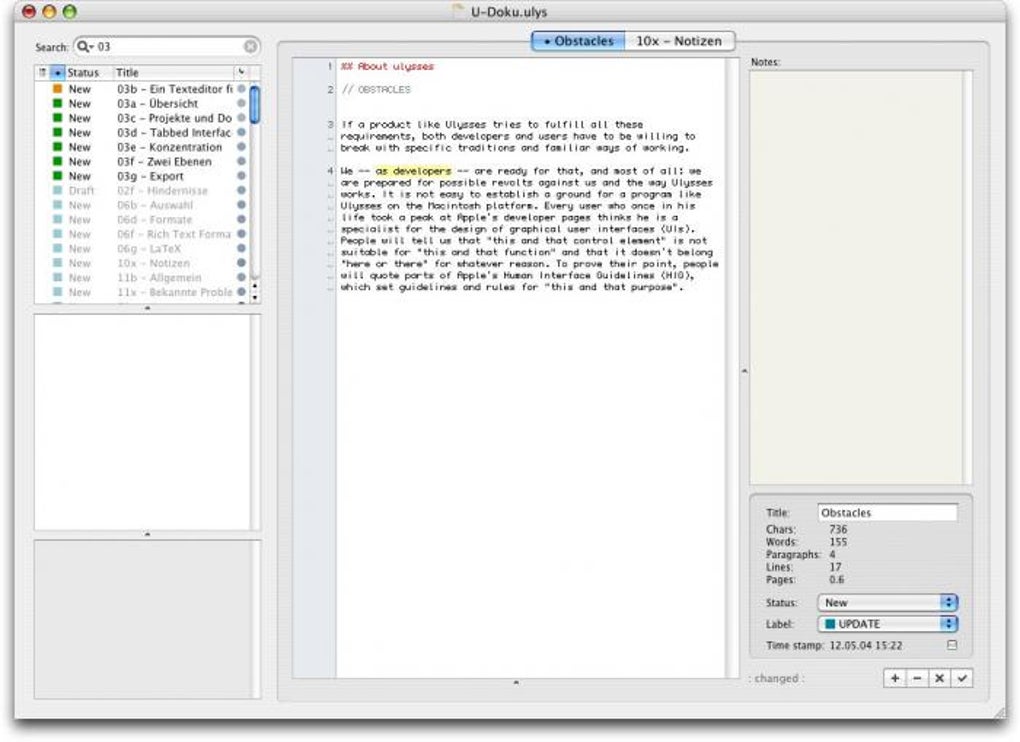


This is stuff that resides somewhere on your disk, probably on Dropbox. The third type of content is what we call “External” content. So if you’re using Daedalus on iPad, and if iCloud is enabled, all of your content will just show up in Ulysses, and every edit you make will sync back and forth. Again, since we want our users to do all their writing in Ulysses, we figured it would be cool to allow Daedalus’ users to continue their work at home, on their Macs. The second type of content is “stacks” and “sheets” from our iOS app Daedalus Touch. Everything, literally everything, is in this one place, right there in the app. These are the main parts of Ulysses, and for most users, they are the only parts they’ll ever see and use.
Ulysses app mac#
Sheets either reside in iCloud (synced) or On My Mac (not synced). We call them sheets, and they allow you to do all this fancy stuff, like adding images and links, annotations, attachments, they can be glued etc. There are three types of content to be aware of. What are these library sections about, and how do they differ from each other? This may add a bit of complexity, but it’s the only way to reach our ideal of Ulysses as your one-stop writing app. That’s why the library has different sections, with slightly different functionality in each. And if we want our users to do all of their writing in Ulysses, then we need to enable all these different users to do so. Some outright hate iCloud, others only have a single Mac anyway, and yet others have to work across different apps, for whatever reason. People have different needs, fears, options. The second idea is more of an acknowledgment. And if Ulysses was the only writing app on the planet, we would have done a simple library, enabled iCloud sync, and shipped. There are no file names, no Finder management, no “Project A new v2 no really new NEW.whatever” to worry about.

So we wanted our users to do all of this in one place, without having to worry about where they put, say, their notes. Writing is ubiquitous, we jot down notes, we draft, we rhyme, we do whole novels – and chances are that we’re not doing one of these exclusively. The first one is that all of your writing should happen in Ulysses. Could you please explain the idea behind it? Why did you choose it over single, stand-alone projects? It’s where all texts are held, and where all organization takes place. One of Ulysses’ most prominent features is the library. Marcus Fehn, the other Soulmen from day one, answered my questions. Likewise, a lot of thought went into the Ulysses library. A couple of weeks ago I chatted with Max about the concept of the Ulysses editor.


 0 kommentar(er)
0 kommentar(er)
